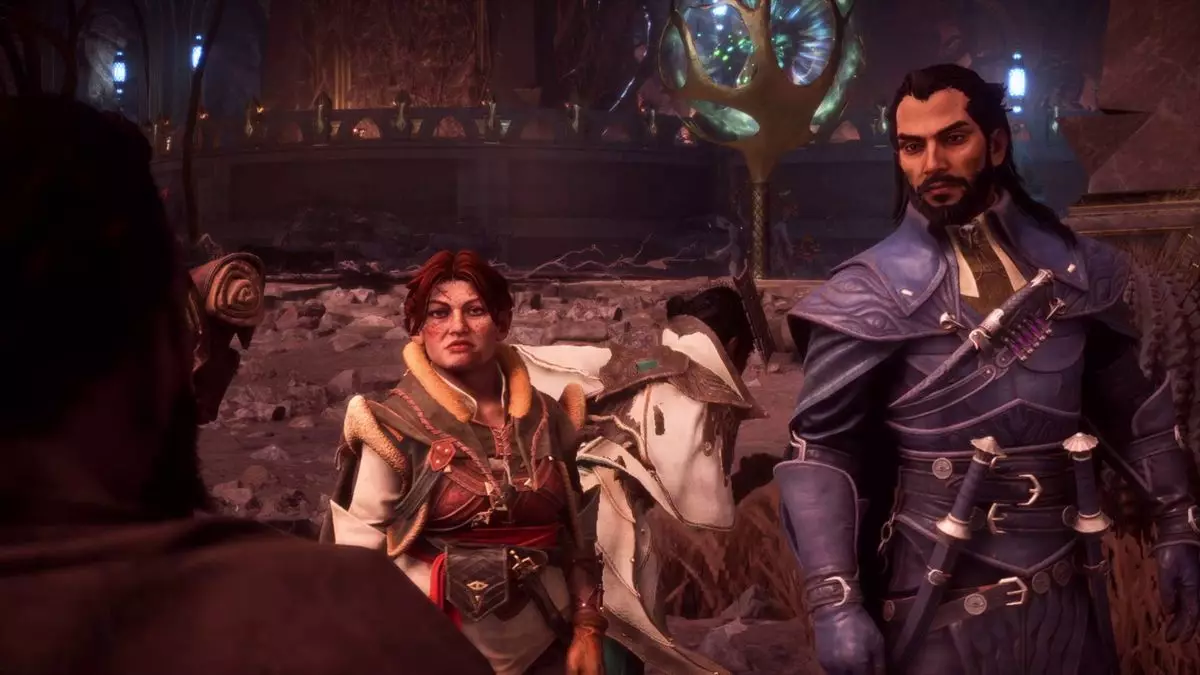The Dragon Age franchise has long been recognized for its intricate storytelling and complex character interactions, especially in its latest installment, Dragon Age Veilguard. One of the game’s most significant and challenging decisions arises when players are faced with a choice between aiding two prominent cities: Minrathous and Treviso. This dilemma is not just a straightforward decision but rather a labyrinthine path filled with emotional weight, consequences, and the essence of sacrifice. In this article, we will dissect this crucial decision while examining both cities’ fates and the everlasting impact on the player’s journey.
In Dragon Age Veilguard, players are thrust into a precarious situation that requires an immediate decision: Help the sturdiest Fortress of Minrathous or the strategic Gem of Treviso. This decision is presented to players without any prior warning, forcing them to make a choice with limited knowledge and context. Such a surprise encounter is stressful, especially when both cities face imminent destruction at the hands of menacing Blight Dragons under the dark influence of Ghilan’nain.
The surrounding context amplifies the difficulty of the choice. Each city’s fate intertwines with unique companions and factions, namely Neve and the Shadow Dragons for Minrathous, along with Lucanis and the Antivan Crows for Treviso. The multifaceted nature of this decision spells doom for the city that players ultimately choose to neglect, making it a watershed moment in the game. As fans of role-playing games know, choices heavily influence character development and story progression, thereby intertwining gameplay mechanics with emotional stakes.
Opting to assist Minrathous entails a series of complex outcomes that reverberate throughout the gameplay. Upon choosing the path of Minrathous, players engage in a climactic battle against the Blight Dragon that jeopardizes the city’s safety. However, as the narrative unfolds, the dragon is inexplicably called away by its master Ghilan’nain, which saves Minrathous temporarily from further devastation.
A notable consequence of this choice is the interruption of the Venatori’s potential coup; the faction is thwarted, and the Shadow Dragons maintain a certain level of order within the city. However, this choice is not without its dark shadows. Treviso succumbs to blight, leading to catastrophic failures of side quests. The dire effects are highlighted as players notice the disappearance of the Antivan Crows merchant while new quests concerning Treviso’s plight emerge, revealing the long-term repercussions of the decision. Lucanis, who remains in Treviso to clean up the aftermath, gains the Hardened effect, which alters his character trajectory for the remainder of the game while eliminating the possibility of a romantic subplot with the player.
Conversely, choosing to aid Treviso comes with its own set of repercussions. In this narrative path, players also engage in an intense battle with a Blight Dragon, which, much like the preceding scenario, is diverted away just in time to save the city. The benefit of aiding Treviso manifests in the preservation of the canals and the rescue of numerous civilians, fostering hope amidst the chaos.
However, Minrathous suffers greatly as a result. The blight overruns the city, leading to the automatic failure of several pivotal side quests. The Antivan Crows merchant disappears, leaving a gap in resource accessibility that complicates future gameplay interactions. Notably, players must navigate the aftermath of their choice, as Lucanis, now grappling with the Hardened effect due to the Minrathous catastrophe, is permanently removed from the romantic equation—adding another layer of sacrifice to the choice.
The demands of Dragon Age Veilguard challenge players to not only weigh their immediate objectives but also to understand the broader implications of their choices. The balance between helping Minrathous versus Treviso goes beyond mere gameplay stats; it delves deeply into character alliances, emotional arcs, and the sustainability of in-game factions. Players are left to consider what it means to uphold loyalty to one character or faction at the expense of another’s well-being.
Even though both choices lead to undesirable outcomes, the narrative cleverly weaves a sense of agency into the player’s hands, encouraging them to reflect on values such as loyalty, morality, and sacrifice. The allure of loading earlier saves to explore alternative plots adds a layer of engagement, allowing players to experience the ramifications of their choices without finality.
The decision to support either Minrathous or Treviso in Dragon Age Veilguard encapsulates everything that makes role-playing games compelling: the complexity of choices and their often-painful consequences. As players weigh their loyalties and the resulting aftermath, they immerse themselves in rich narratives that challenge both their strategic thinking and emotional endurance. Ultimately, the Veilguard journey is a testament to the burdens and joys of choice, a theme that resonates long after the game is over.


Leave a Reply